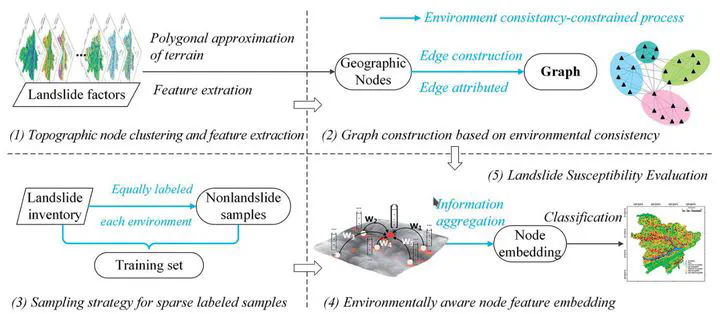Graph Neural Networks with Constraints of Environmental Consistency for Landslide Susceptibility Evaluation
Jul 1, 2022·
,
,
 ,
,
,
,
·
0 min read
,
,
,
,
·
0 min read
Haowei Zeng
Qing Zhu
Yulin Ding
Han Hu
Li Chen
Xiao Xie
Min Chen
Yanxia Yao

Abstract
In complex and heterogeneous geoenvironments, landslides exhibit varying features in different environments, and data in landslide inventories are imbalanced. Existing data-driven landslide susceptibility evaluation (LSE) methods overlook environmental heterogeneity and cannot reliably predict regions with few samples. Alternatively, global random negative sampling strategies may produce imbalanced positive and negative samples in some environments, contributing to inaccurate predictions. This article proposes a graph neural network (GNN) constrained by environmental consistency (GNN-EC) to overcome these problems. The GNN-EC consists of graphs with nodes, and edges. A graph represents the environmental relationships in the study area. Nodes are geographic units delineated from terrain polygon approximation. Edges capture the relationships between node-pairs. Additionally, the weights of edges reflect the similarity between two node environments. A GNN aggregates node information in the graph for LSE. Our experiment showed that the proposed method outperformed the common machine learning methods: increasing prediction accuracy by approximately 7, 5– 6 and 3– 4% compared to the artificial neural network (ANN), the support vector machine (SVM) and the random forest (RF), respectively. Moreover, our method can maintain high prediction accuracy, even with a small training set.
Publication
International Journal of Geographical Information Science